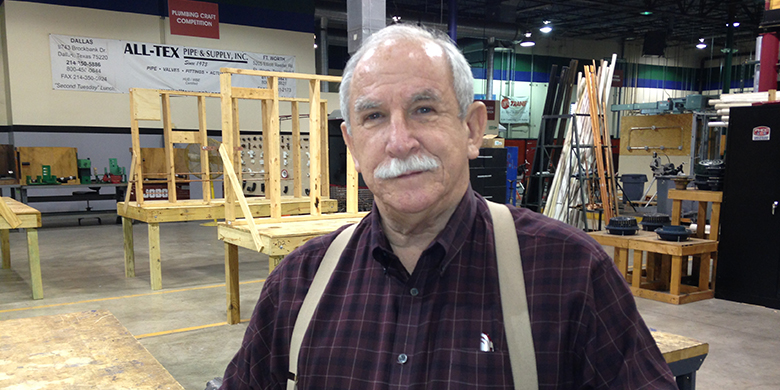Last updated on October 4, 2019
North Texans normally don’t experience the long, harsh and snowy winters that people in Minnesota or Maine enjoy. Coats and sweaters don’t even come out of storage until late October or even November. But that doesn’t mean residents should neglect winterizing their homes, which could keep them warm and leave a little extra money in their pockets.
Older homes, and even some newer ones, lack sufficient or appropriate insulation to keep the warm air in and the cold air out. Stand next to an old window in the middle of January, when the cold wind blows through the Dallas-Fort Worth Metroplex – it feels like an air conditioning unit is putting out chilly air, just like it’s August. This air infiltration can cost homeowners and renters a lot of cash, but experts say some of that loss can be prevented or minimized.
Mike Cooley, dean of construction management and technology at North Lake College, said that area homeowners can follow some common sense, money-saving steps which will help them keep their homes warm during North Texas winters.
“Heat loss in a home occurs primarily through the roof,” Cooley said. “It’s important to check the insulation in the ceilings because blown-in insulation settles after a few years, and it needs to be replenished to prevent heat loss.” Blown-in insulation is typically the pink, loose, fiberglass material that often is seen in attics and between floors and walls.
Cooley said newer materials and technologies, such as foaming insulation, work even better to insulate a house than the blown-in material. The polyurethane foam is sprayed in, expands and fills in crevices and cracks, which creates a tighter seal around the house.
Older windows can be very drafty, and they often allow too much cold air to seep into a home, too. Brandon Morton, sustainability coordinator at North Lake, said window sills and seams should be caulked to prevent the air infiltration that sometimes makes those windows feel like fans.
For people who are inclined to spend extra money for long-term savings, Cooley said double- or even triple-paned windows work best. For additional savings, Cooley recommended using Low-E film on windows, which decreases heat loss in the winter and reduces heat gain in the summer. He added that nitrogen-filled windows are even better.
“The best way to save money on heating is by adjusting your temperature points to the most tolerable and comfortable levels,” said Morton, adding, “It can be easier to phase your temperature change over time as you get used to the new indoor temperature.” He said people might be surprised at how comfortable they are once they get used to the new temperature. If possible, the heater should be turned off when no one is home, he added.
Cooley said the heating system should be checked to make sure air filters are good and clean, so it can operate efficiently. Additionally, thermostats should be operating properly and at the correct temperature. “Even if you’re just a couple of degrees off, that can make a big difference,” he added. Cooley said homeowners should replace old thermostats with new, programmable ones, adding that they pay for themselves over time.
While lighting up a fireplace, whether it’s gas or wood, can make a room look warm and cozy, the flames don’t generate enough radiant heat to warm up a room because the heat simply goes up and out of the chimney, Cooley said. More importantly, closing the damper when a fireplace is not in use is very important. “The [HVAC] system changes the air in a room four to five times per hour. That’s how the system is set up. If the damper is not closed, warm air escapes, which doubles the room air changes, so you’re heating twice as much air. It is a very significant loss of heat,” Cooley said.
In addition to applying weather seals around doors, Cooley said dog doors should be covered at least temporarily because air infiltration can occur. He advised letting Fido go in and out of the regular door to save money.
Houses with pier-and-beam foundations have crawlspaces under the floors that need to be insulated. “The perimeter of that crawlspace needs to be closed so that you don’t have any draft coming through there,” Cooley said.
Air often infiltrates through exterior light switches and electrical outlets because the wiring and electrical boxes around them impede the installation of insulation inside the walls; they also should be insulated and caulked, Cooley said.
Morton added that gaps in the exterior walls should be sealed with inexpensive foam filler to better insulate the house.
Interested in becoming an HVAC/weatherization expert like Cooley? Read more about our Air Conditioning and Refrigeration Technology program, or check out our other Construction programs.
